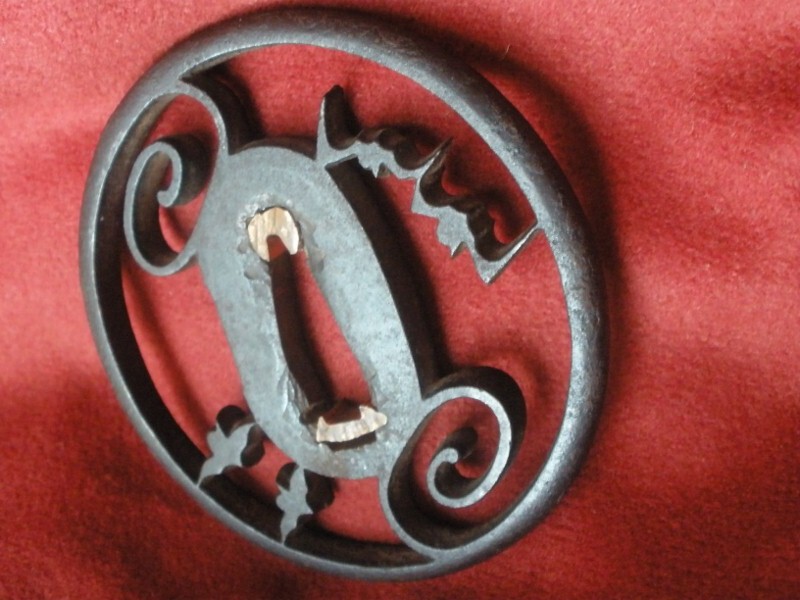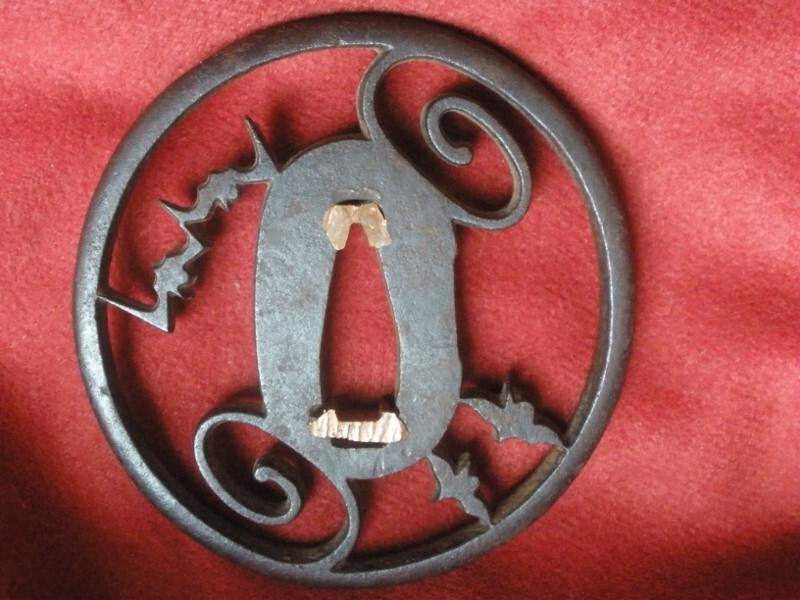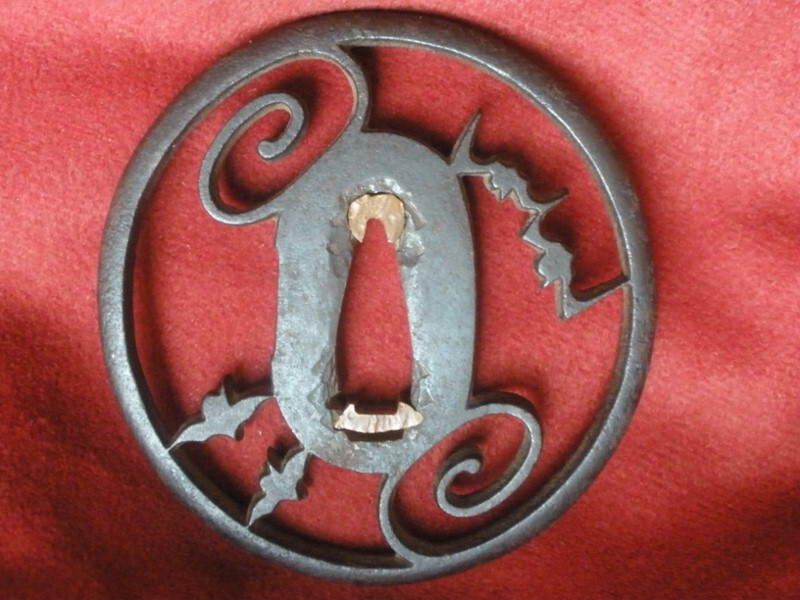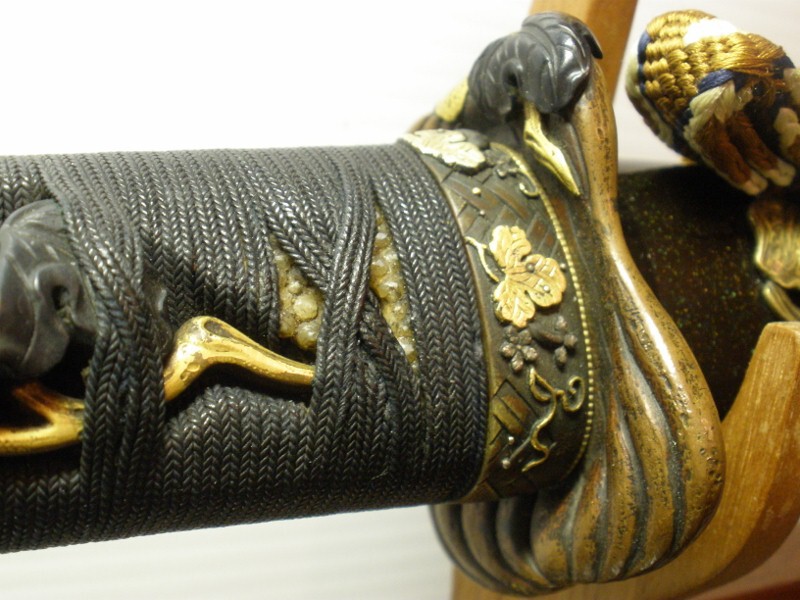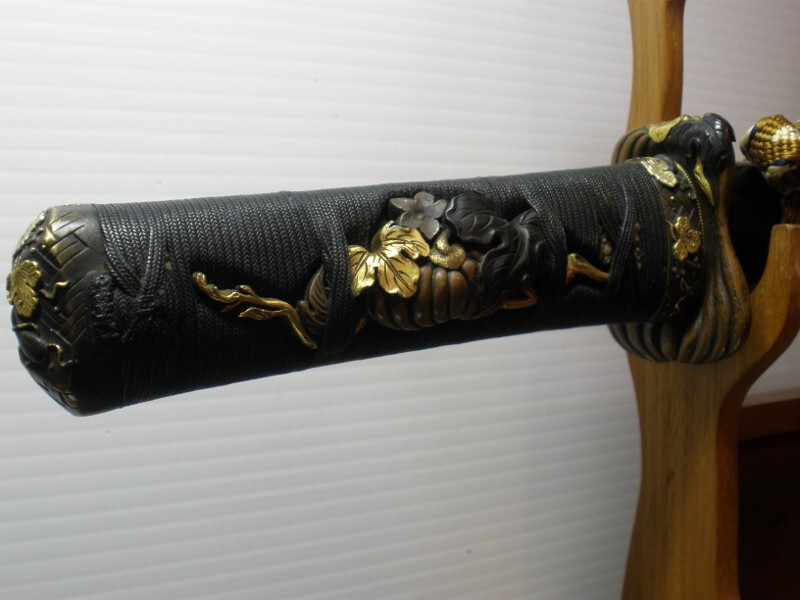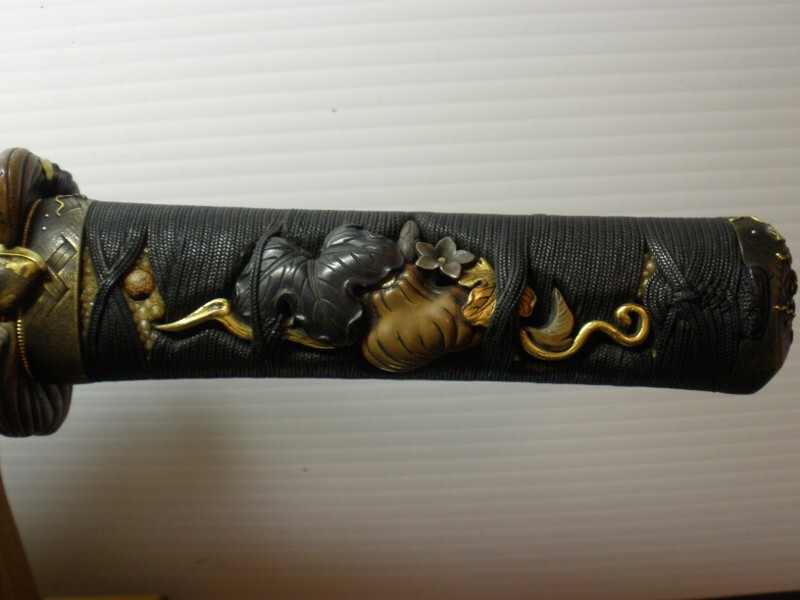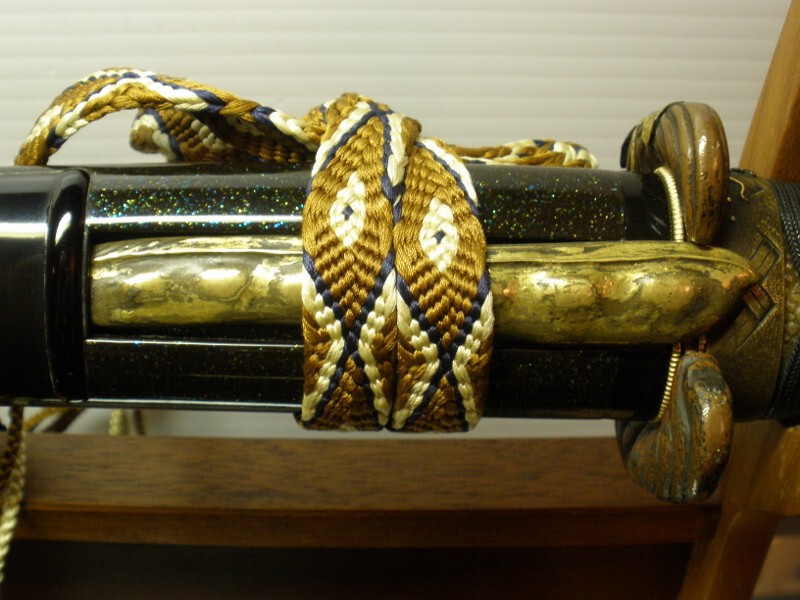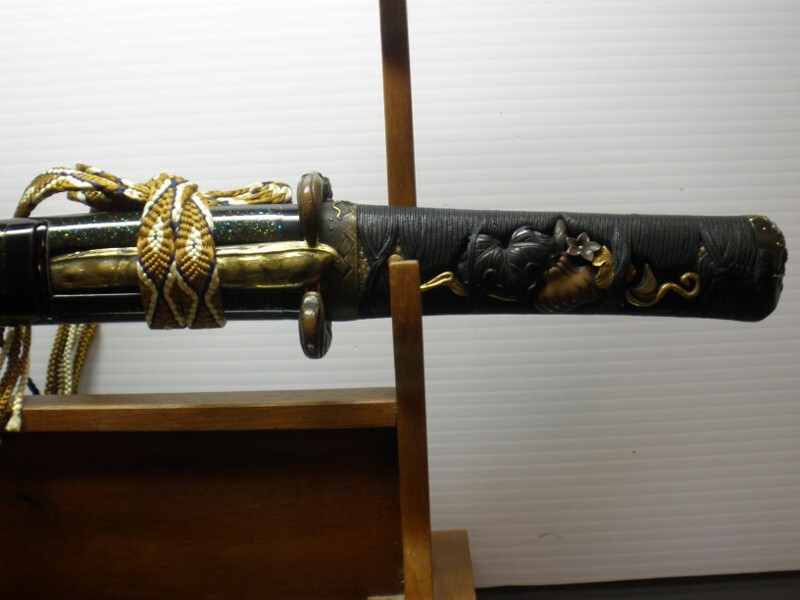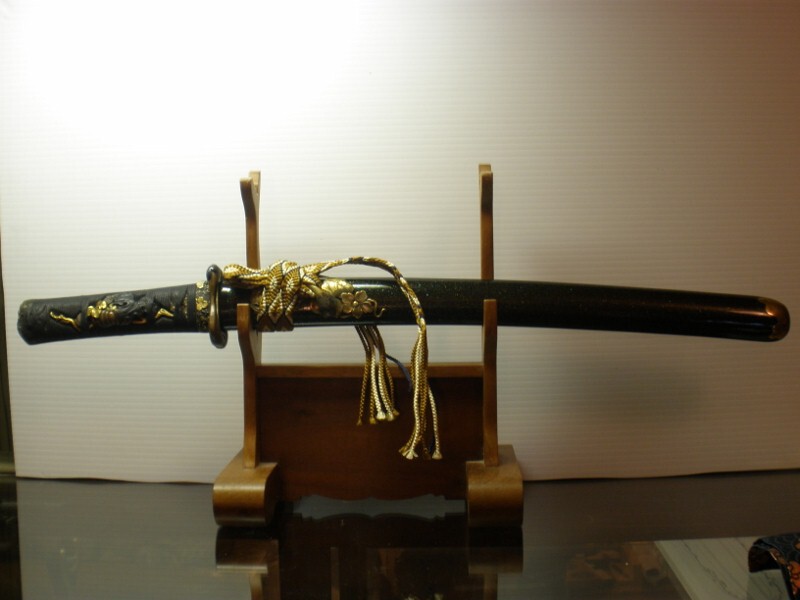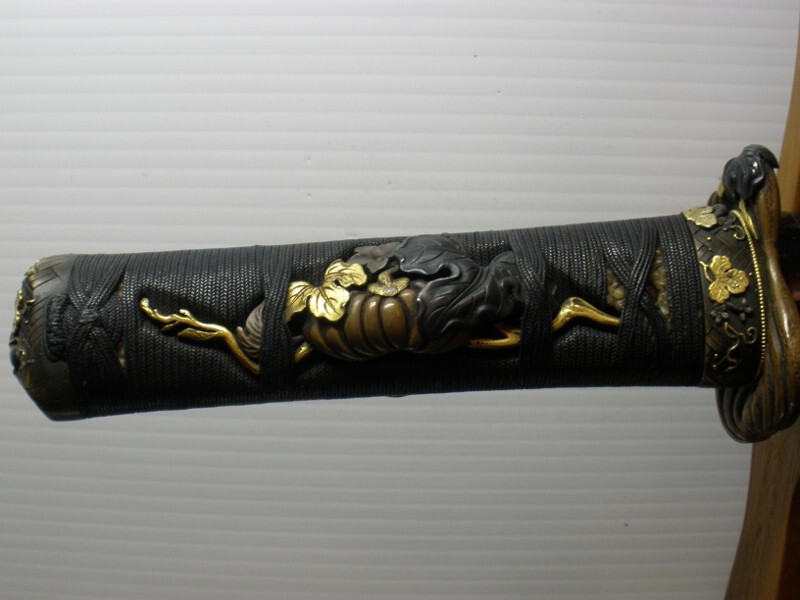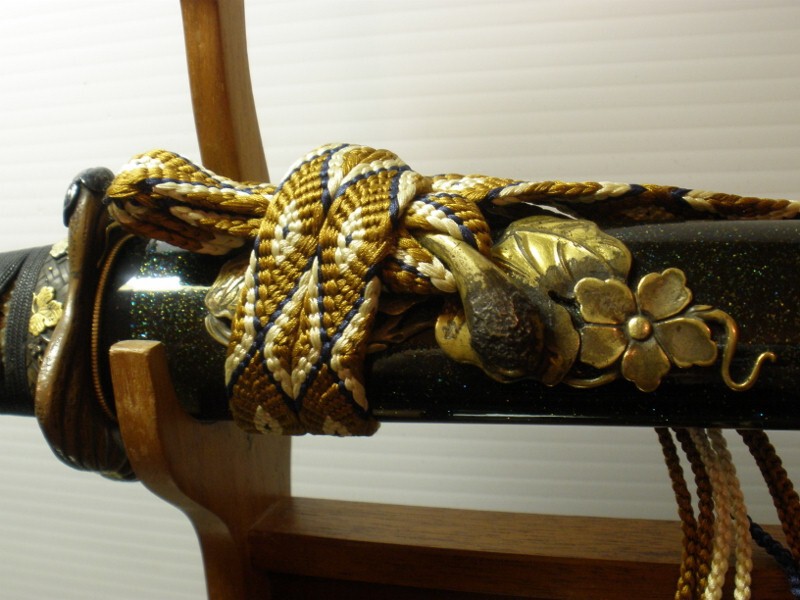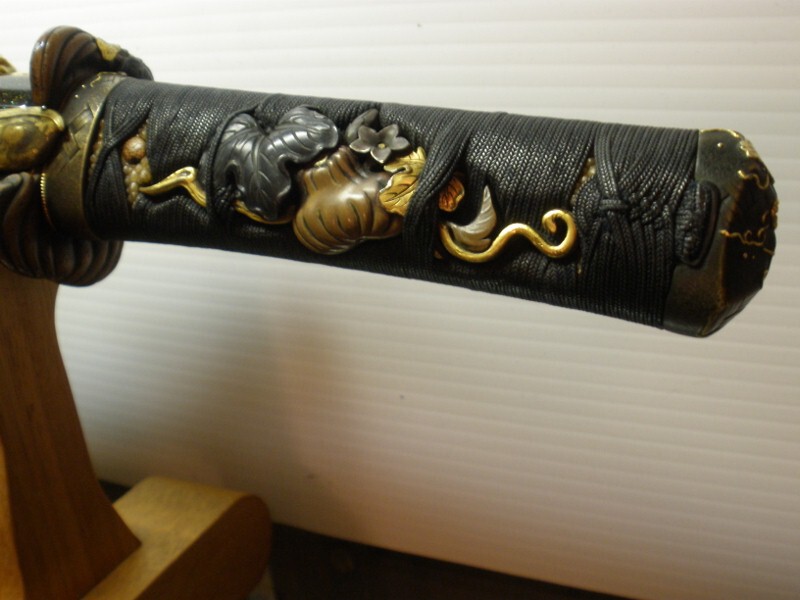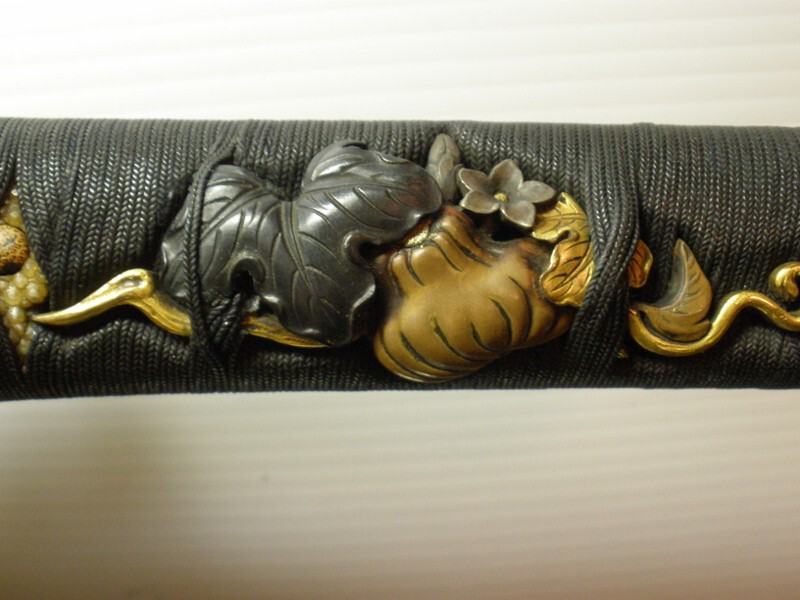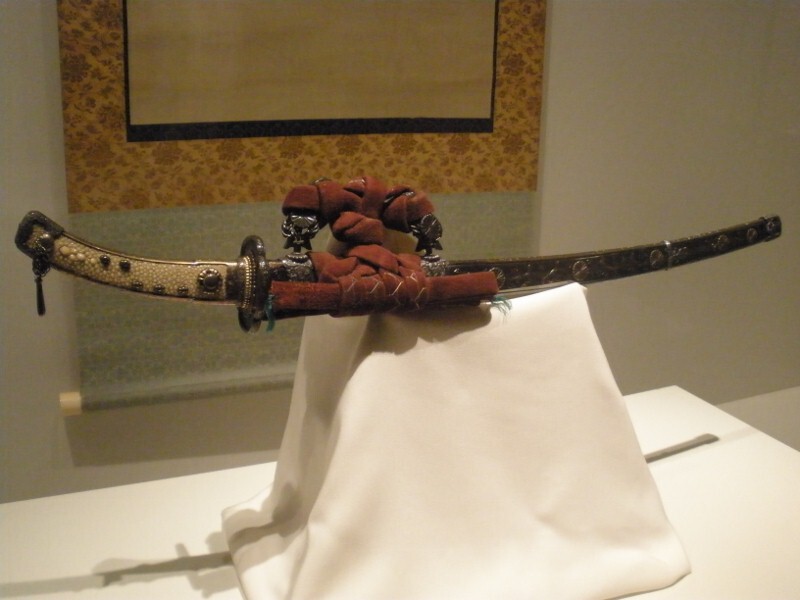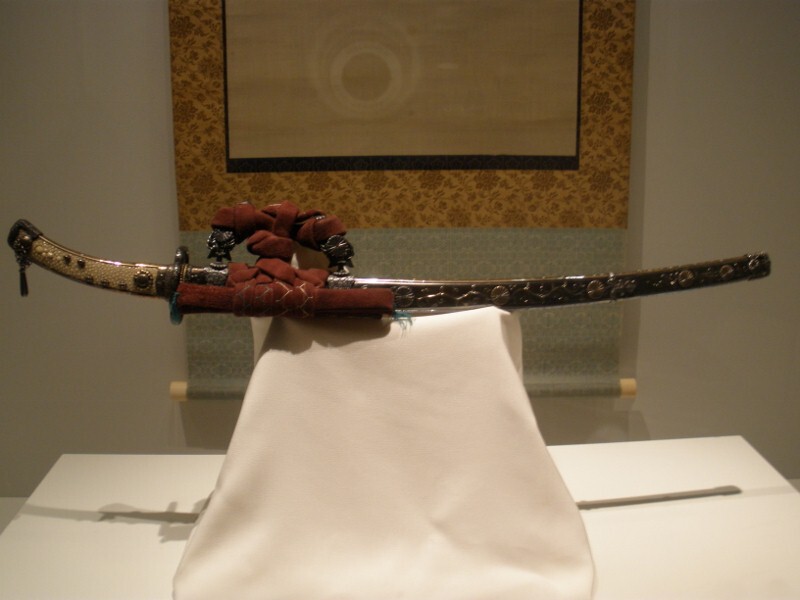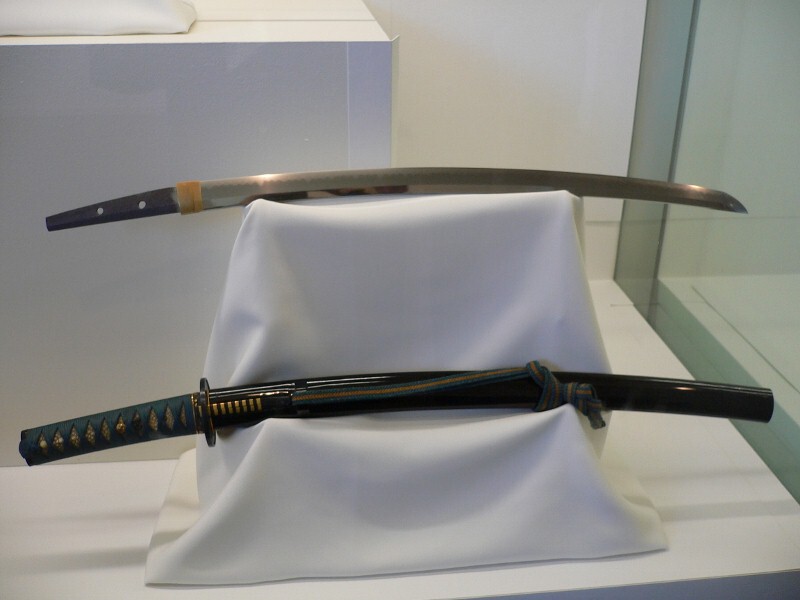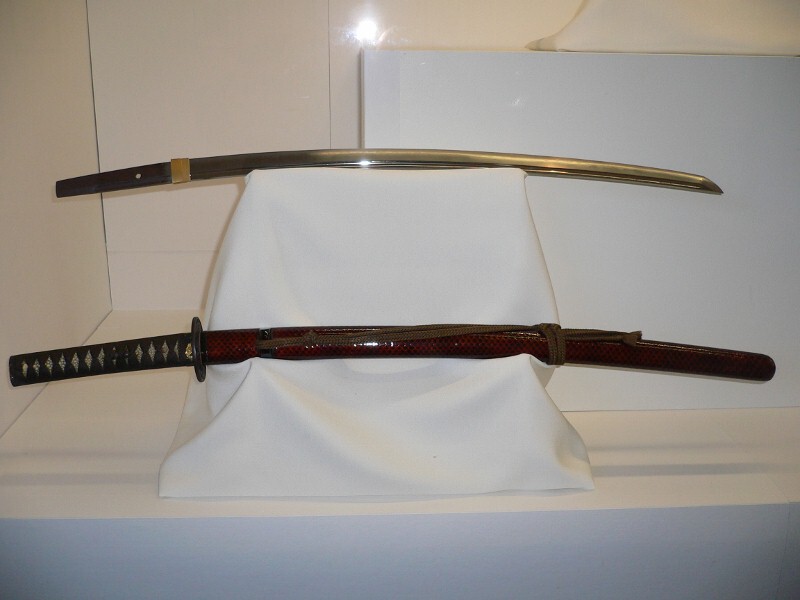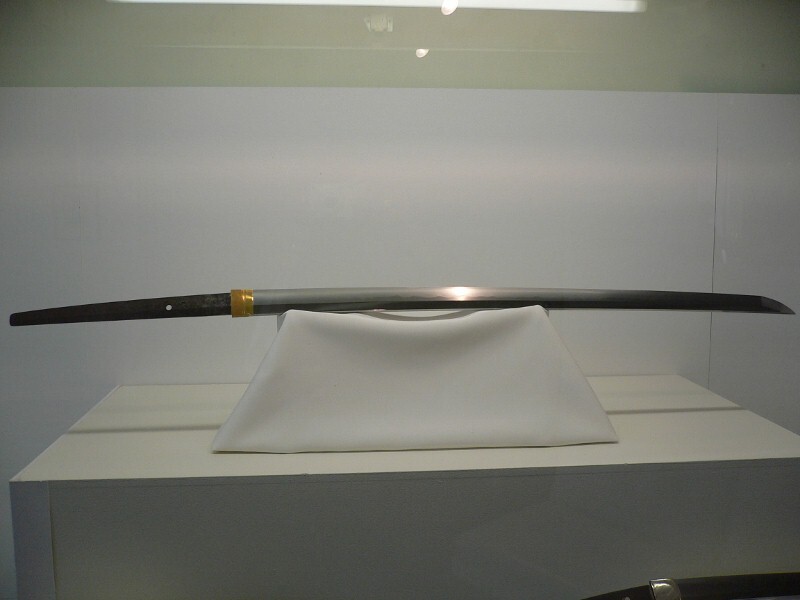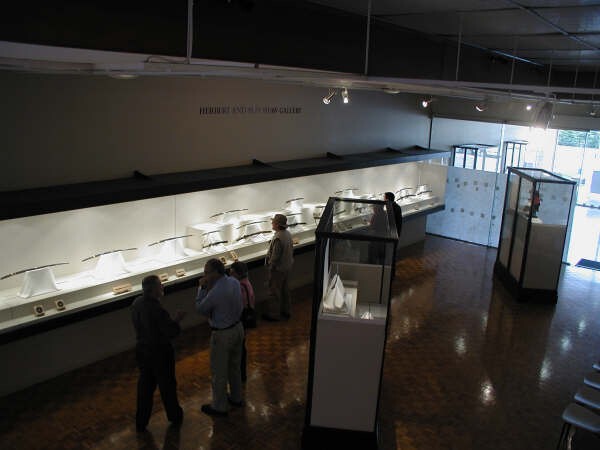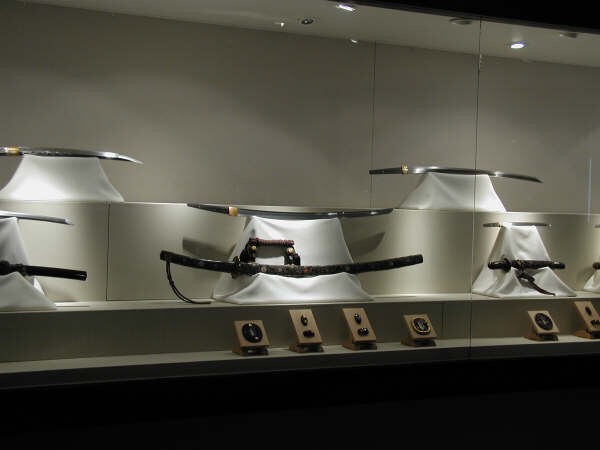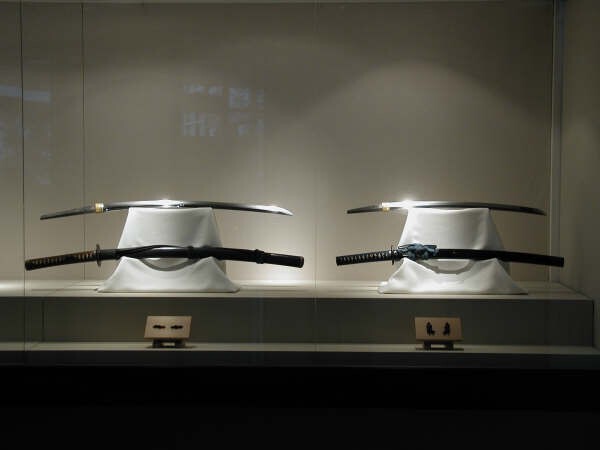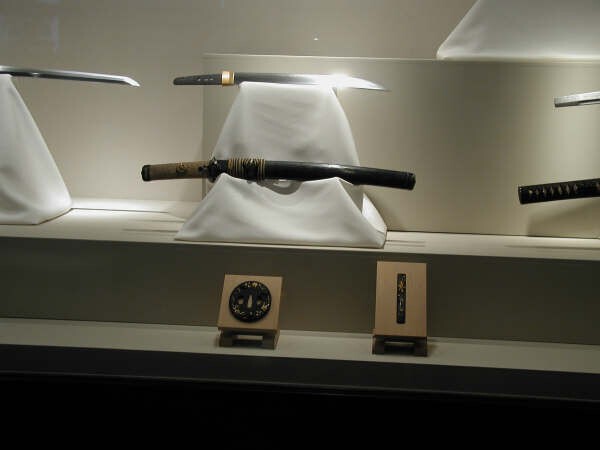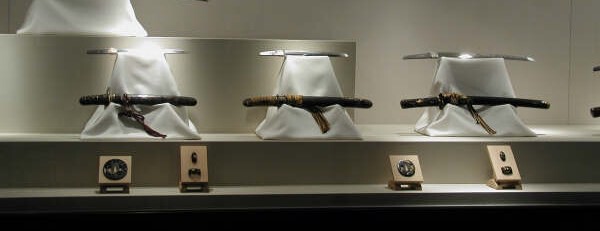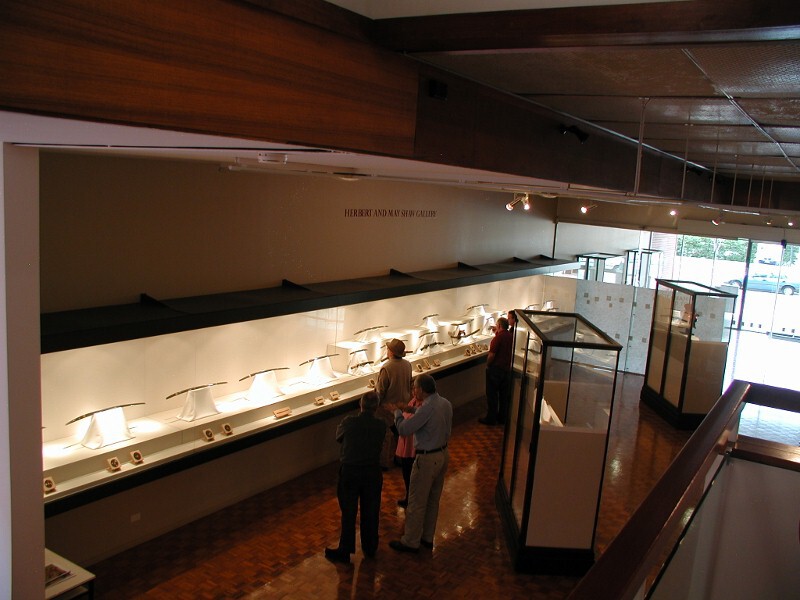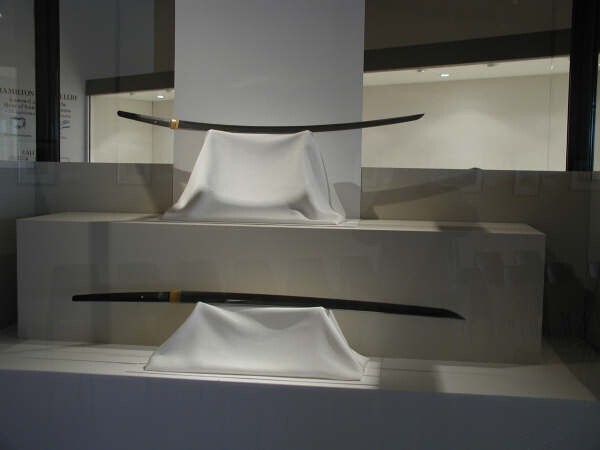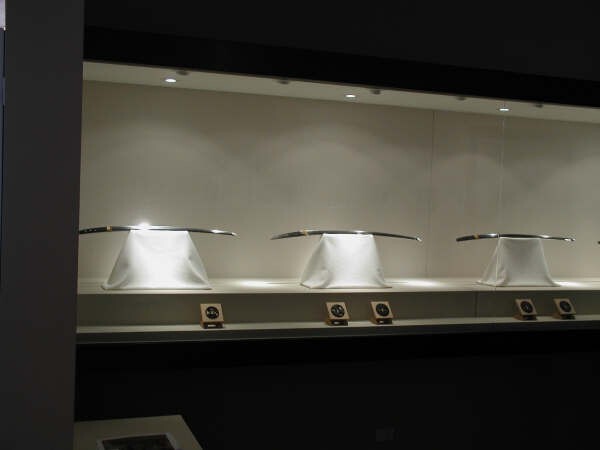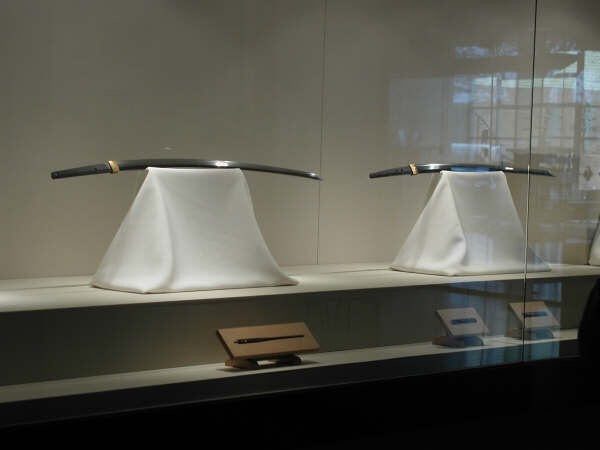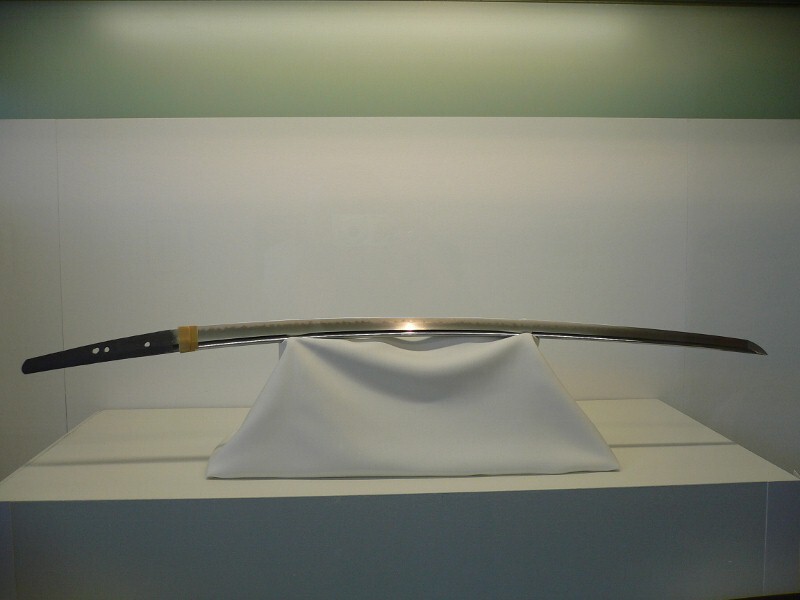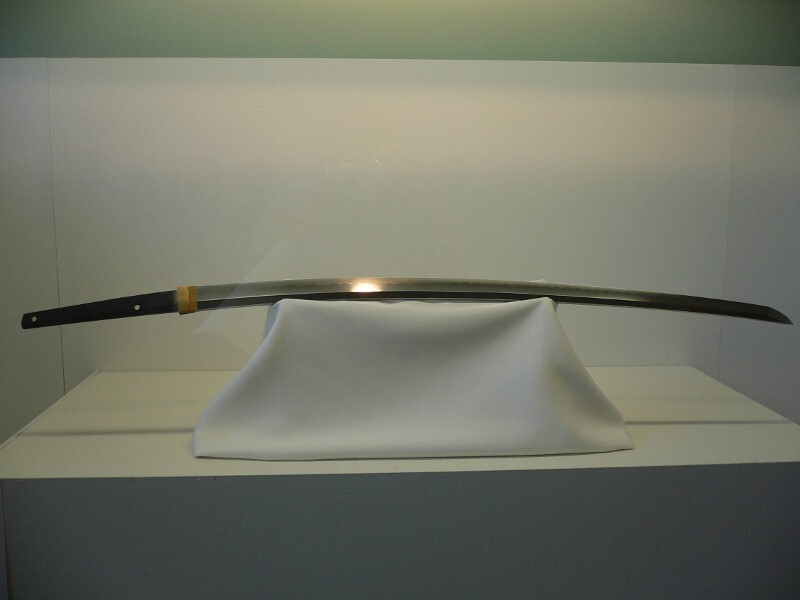-
Posts
514 -
Joined
-
Last visited
-
Days Won
5
Content Type
Profiles
Forums
Events
Store
Downloads
Gallery
Everything posted by Chishiki
-
Hi Lionel. I think the mei/signature is not correct. Also the koshirae/mounts are low quality. Only my opinion. Please wait for other opinions. Regards Mark
-
Well I don't quite understand why you ask for advice, get good advice given, and then seemingly choose to ignore it. There are plenty of commercial polishers around who will polish about anything you send them. It is their living. Again my advice is to wait for a better sword. But it is your money, do what you want. Mark
-
Hi Andrew. Maybe you missed this thread. viewtopic.php?f=9&t=4666 Our display of swords at the Art Gallery of New South Wales. All these swords have been polished by a Mukansa level togishi. Regards Mark
-
Hi, I wonder if this nakago is ubu? It may have been altered long ago to look more soshu. Is the nakago correct? Mark
-
Hi Peter. One of your greatest challenges will be finding a sword worth the expense of polishing. You can look at this link http://www007.upp.so-net.ne.jp/m-kenji/service.html .Mishina Kenji, whose website outlines the expenses you are up for. BTW I have never used his services but he has been around a long time and speaks english. I think finding the right sword for polish is your priority at the moment, and I don't think the sword you are pondering is the one, just my opinion. I think there are better prospects. Do yourself a favour and get down to the Art Gallery of New South Wales where you can see a great display of swords, all with 1st class polish. Study them closely. Presently there is a Juyo token on display. Most of these swords have been found here in Australia. Here is a link to that thread. viewtopic.php?f=9&t=4666 Find the right sword is my best advice at present. Regards Mark PS, just for comparison. Here at Aoi Art you can see there are grades of polish etc. http://www.aoi-art.com/hanbaikousaku/polish.html But again, my advice is to find a sword worthy of a top polish. I tried to do it on the cheap when I first started and it wasn't a satisfying experience.
-
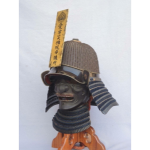
Are there any polishers in Europe
Chishiki replied to Jesper's topic in General Nihonto Related Discussion
Hi Ford, I see where some confusion may have crept into the discussion. The tsuba I actually bought is http://cgi.ebay.com.au/ws/eBayISAPI.dll ... K:MEWNX:IT I know the tsuba you are referring to, someone put that in the discussion as a matter of interest. I did not buy it. Please see the link above or search for item 250503171783. Regards Mark -

Are there any polishers in Europe
Chishiki replied to Jesper's topic in General Nihonto Related Discussion
Ford, I expected to receive some flak for posting my opinion in regards to the value of NBTHK Tokubetsu Hozon papers in assessing this piece. It seems that voicing an opinion which contradicts yours has brought out some sensitivities and a condescending retort. Whilst I don’t know you apart from your posts here on NMB it seems you consider yourself somewhat of an oracle in tosogu. And now you are a valuer also? As for me I don’t and never will hold myself out to be an expert. It’s not for you to say who pays what is right or wrong, the market decides and in this case the market was me. We all collect what we like and pay accordingly as pieces present themselves. My opinion is as valid as yours regarding the value of tokubetsu hozon papers when assessing the quality and value of this tsuba. I also get a warm fuzzy feeling knowing that the experts at the NBTHK, the organization that really matters, think issuing papers to such pieces goes some way to showing the world that it is a fine example. I feel no shame in embracing the commercial aspect of it also. If you feel one should rely on their own knowledge in assessing the worth of a piece and its artistic merit rather than using a NBTHK paper, what is the purpose of you entering competitions in that very organization? You clearly value their opinion right? Well so do I. Don’t you use your successes with the NBTHK as a selling point for your pieces? Jean, I can’t argue with your responses and can only say that whilst I put a monetary and commercial value on a TH paper, it doesn’t mean I can’t make my own judgment based on the artistic merit of a particular piece. Mark -

Are there any polishers in Europe
Chishiki replied to Jesper's topic in General Nihonto Related Discussion
Hi all. Well Jean and Ford, I find myself inadvertently involved in this discussion as I am the person who bought that Jakushi Tsuba you refer to off ebay. Incidentally it arrived today, and I must say I am very pleased with it. I would like to add my opinions to your comments as on most points I disagree with you. 1. You said “what is the point of getting a Tokubetsu Hozon paper on a mumei Jakushi tsuba”? Firstly from the commercial point of view, the main reason for buying this tsuba was that it is papered to TH level. Buying from the internet is full of pitfalls for anyone, no matter what your level is. I bid confidently know that a) the tsuba is correct and the paper corroborated the sellers description, and that b)whilst the photos weren’t particularly good I could be reasonably sure that it would be of a desirable condition and quality. You simply can’t get a good feeling about these subtleties, like iron quality, condition, and perspective by looking at a photo on the internet. Your comments are are in your own way putting down a method of appraisal that has existed for generations, Kanteisho origami, whether it be for tosogu or swords. Your simplistic view may be applied to everything, why get a mumei, late muromachi period bizen sword papered to any level? Or for that matter why get a signed sword papered? If a signed sword is clearly right in your thinking, why get it papered? Commercial reasons mostly and verification of your opinion as to the items exceptional quality or rarity when compared to works of the same school or smith. I remember having a mumei sword polished and make it through to TH, I was thrilled. I am sure if I find a Jakushi out there and get it to TH level I will be equally thrilled. 2. People who know nothing about tsuba would be able to appreciate the items importance and quality if it has a high art level. It verifies what you say the item is. 3. In the future when it comes time to pass it on to someone else, if they are inexperience collectors, they can buy with the same confidence that I had. Not everyone Jean is as lucky as you to have reached some kind of nirvana in tosogu judgement. 4. In relation to this tsuba I admit don’t know much about this school. But the existence of the TH paper may indicate that whilst in is unsigned, if may belong to one of the 1st two generations, and a very good example when compared to tsuba of similar manufacture. Lastly Jean and Ford. As you don’t rate Tokubetsu Hozon papers on mumei tsuba highly, I’d be interested in buying all you have. They must grow on trees where you live. Mark -
Hi. All the swords on display in the Art Gallery of New South Wales are in Shashikomi Polish. The polisher is Mukansa level and the very best quality polish available. He has been asked not to do hadori. This is our preference. See the swords at viewtopic.php?f=9&t=4666 Regards Mark
-

Sword Display
Chishiki replied to Chishiki's topic in Sword Shows, Events, Community News and Legislation Issues
TOP SHELF :- 1 OSAFUNE SUKESADA (TOSHIRO SCHOOL) LEFT TO RIGHT 2 SOJI (MINOBEI) TAIKEI NAOTANE 3 KUNIYASU HORIKAWA MIDDLE SHELF:- 4 SUO (SEIRYUSHI) MORITOSHI 5 WAKASA NO KAMI MICHITOKI 6 SOJI (KATSUYA) NAOHIDE 7 SENJUIN SCHOOL (AKASAKA-MINO) BOTTOM SHELF:- 8 HAMANO NORIYUKI 9 KOGOTO 10 GOTO HOKKYO ICHIJO (HACHIROBEE LINE) 11 ITO MASAYOSHI (BUSHU ITO SCHOOL) 12 ITO MASACHIKA (BUSHU ITO SCHOOL) 13 SURUGA (HAYATA CHUJIRO) TAKAOKI 14 ISHIGURO (KATO KINJIRO) TERUAKI 15 GOTO MITSUKUNI 16 TAKAHASHI GURI-BORI 17 ISHIGURO ICHIJU (PUPIL OF KORETSUNE) 18 ISHIGURO (GINNOSUKE) MASATSUNE III THIS IS A LIST OF NIHONTO AND TOSOGU CURRENTLY ON DISPLAY AT THE ART GALLERY OF NEW SOUTH WALES, COLIN MCDONALD WILL BE THERE IN NOVEMBER TO CHECK THE DISPLAY, IF ANYONE IS INTERESTED IN A FIRST HAND VIEWING OR WISHES TO ASK QUESTIONS COLIN WILL BE HAPPY TO PROVIDE MORE INFORMATION ABOUT THE PIECES ON DISPLAY. DATE TO BE ADVISED -

Sword Display
Chishiki replied to Chishiki's topic in Sword Shows, Events, Community News and Legislation Issues
Whilst these postings vary in topic, they are about showing collectors what we have displayed at the Art Gallery of New South Wales. We would prefer the thread to proceed as is but if the moderators wish to alter it then it's up to them. We are just looking for feedback to add some flavour and interest. Regards Mark -

Sword Display
Chishiki replied to Chishiki's topic in Sword Shows, Events, Community News and Legislation Issues
Hi all. Would appreciate comments on this Akasaka Tsuba. It has Tokubetsu Kicho papers. Any opinion as to 1. Age. 2. Artist(generation). 3. Theme. Diameter is 6.5cm. Thank you in advance. -

Sword Display
Chishiki replied to Chishiki's topic in Sword Shows, Events, Community News and Legislation Issues
-

Sword Display
Chishiki replied to Chishiki's topic in Sword Shows, Events, Community News and Legislation Issues
-

Sword Display
Chishiki replied to Chishiki's topic in Sword Shows, Events, Community News and Legislation Issues
Hi Lorenzo, here are the pics for you of the masataka koshirae. Very sorry for the late reply. If you want higher resolution pics pm me with your email address. The fuchi gashira are by 4th yasuchika. The other mounts are by an artist we have no reference on (forgot to take a pic and will do so in the future). The mounts (tsuba and kozuka) are also dated to 1829. It is felt the sword is actually by Suketaka but the NBTHK attributed to his grandson Masataka, we accept what they say but beg to differ. As you see they are very unique mounts. Again sorry for the lateness to your request. Kind Regards Mark -

Sword Display
Chishiki replied to Chishiki's topic in Sword Shows, Events, Community News and Legislation Issues
-

Sword Display
Chishiki replied to Chishiki's topic in Sword Shows, Events, Community News and Legislation Issues
A 4th generation Kanemoto Wakizashi. 3rd Magoroku, although it is strongly felt it is actually Kanemoto 3 or 2nd Magoroku. Hozon token. -

Sword Display
Chishiki replied to Chishiki's topic in Sword Shows, Events, Community News and Legislation Issues
-

Sword Display
Chishiki replied to Chishiki's topic in Sword Shows, Events, Community News and Legislation Issues
This is an Osaka Shinshinto Katana by Terutsugu. Full mei is MINAMOTO HIDE(also read TERU)TSUGU SESSHU OMIYA HACHIMAN SANROKU-ni OITE KORE-o TSUKURU. It says Minamoto Hidetsugu or Terutsugu? made it at the foot of Mt Hachiman at Omiya in Sesshu (Osaka). The NBTHK looked into the catalogues of signatures they have,and his name was not listed,but it is now(so there is no reference material in the NBTHK available for this sword smith). Interesting to see such a long nakago on an ubu sword. Any ideas as to why? (ps. I know, this is a question for newer collectors). Question 2. Any idea of the significance of Mt. Hachiman? Where it is and was it a known sword production location? This we don't really know. -

Sword Display
Chishiki replied to Chishiki's topic in Sword Shows, Events, Community News and Legislation Issues
-

Sword Display
Chishiki replied to Chishiki's topic in Sword Shows, Events, Community News and Legislation Issues
Hi, not a stupid question at all. The swords are basically displayed as they would have been worn. The Mihara School blade has "tachi" stipulated on the NBTHK paper and dates to about circa1400. Many blades from this period were shortened to be worn differently, ie Katana. Had that particular sword been shortened the paper would have said "katana". The blade displayed with the cloisonne mounts is a katana but displayed as tachi as it goes with the tachi mounts, and would have been worn edge down. This is a basic explanation as I understand it. Maybe someone else can be more specific. Regards Mark -

Sword Display
Chishiki replied to Chishiki's topic in Sword Shows, Events, Community News and Legislation Issues
-

Sword Display
Chishiki replied to Chishiki's topic in Sword Shows, Events, Community News and Legislation Issues
Jean, this is Akasaka Senjuin Katana again. It is the best pic of the hamon I could get at present. I should have added earlier that you are correct in that you see some togari ba in the hamon. Circa 1450, Hozon Token. -

Sword Display
Chishiki replied to Chishiki's topic in Sword Shows, Events, Community News and Legislation Issues
Koto Kanabo Masatsugu Katana. Tokubetsu hozon. It is thought that this sword is his earliest known work.


